Much like her prints, Caitlin Hinshelwood’s approach to her craft is a multi-layered process that reveals ever greater levels of detail and complexity the closer you get to it. Oh, and did we mention that her playful screen printed textiles provide the perfect accessory for both your wardrobe and interior design?
Part of Heal’s Modern Craft Market: Made in London, we have long been admirers of Caitlin’s colourful scarfs, flags and fabric designs, so when she invited us over to have a nosey around her bustling Bermondsey studio to see the some of the pieces that will be on display being hand printed, we jumped at the chance. Of course, it’s only fair that we share such an experience with all you design devotees out there and for those who wish to the see the process plus meet Caitlin in person make sure to head to the Made in London launch party at our flagship store.
–
Did you have aspirations to become a designer from a young age?
When I was younger I wanted to be David Attenborough. But I’ve always liked getting my hands dirty and creating stuff, so it makes sense that I became a designer.
I studied Printed Textiles at the University of Brighton and have been designing and screen-printing ever since I graduated. However, I’ve had many other weird and wonderful jobs along the way to support myself in doing that. I currently work part-time as a lecturer in Printed Textiles at Winchester School of Art, which is a very inspiring job to do alongside being a designer and maker.
What’s the first piece you designed that you were truly proud of?
I guess my graduate collection was the first time I think I’d really understood design so that’s probably the most significant moment but not necessarily the proudest. You always go off things and strive to do things better.
I felt truly proud of the large-scale flags I produced last year as I’d really pushed myself with those and they combine lots of ideas and techniques I’d been honing for many years. There’s also one on display as part of the Heal’s Modern Craft Market.
How long has it taken you to learn and develop your screen printing skills?
I learnt the foundation of my skills at university but if I hadn’t kept screen-printing in the 10 years since then I wouldn’t have refined them as I have now. My understanding of the processes I use has grown so much in those years. I mainly use a complex printing process called colour discharge printing which can be very unpredictable and variable so I’ve had to keep doing it all this time to get anything near decent.
Can you pinpoint what it is about the medium of screen printing that you love?
Screen printing is a surprisingly long-winded and laborious process, which I’m not sure everyone always understands. However, the moment when you actually start printing and putting colours down and the piece starts coming together is always so exciting. Colour is one of the most important parts of my practice and I absolutely love playing with it in the print room and pushing the combinations I use. It’s the moment your black and white screen artwork finally comes to life!
“When I was younger I wanted to be David Attenborough. But I’ve
always liked getting my hands dirty and creating stuff,
so it makes sense that I became a designer.”
Which designers and makers most inspire your work?
I tend not to look too much to other designers and makers, that’s not to say I don’t admire the work of others, it’s just that my inspirations come from elsewhere. I always admire the things that feel like a real labour of love, often work by unknown makers who were just producing things for the love of making or decoration or necessity.
In another life, I think I would have been a weaver as I have an endless admiration for woven textiles. I think the studio Rare Thread, a collective of incredible weavers, are producing some very beautiful and exciting fabrics.
Tell us a bit about your studio and the where you produce your work.
I recently moved to a new studio space in Stoke Newington and I love it there. I have my own little mezzanine floor with all my books, research and materials around me, and it just feels like a great place to be tucked away to create. It also has multiple windows, which has been an exciting step up in the world.
I do all the screen printing at Printall Studios, a workshop in Bermondsey, which is an open-access space. I’ve been printing there for a really long time and have built up a network of other printers that provides a great sense of community and support.
What’s an average day in your studio like?
Every day is different to the next depending on what I am working on and which space I am working in. Time in my design studio tends to be much more quiet and calm, working ideas out, drawing, doing artwork whilst listening to music.
A day in the print workshop is very long and tiring and I barely stop to sit down all day, but that’s the place where ideas start to be transformed. I dye and wash out all the fabrics at home so that again is another kind of working day, one where I try not to get distracted by the garden or the cat. It’s good to have that contrast.
Talk us through the process for creating your scarfs.
An idea for a new piece usually emerges from discovering something at a museum, in a book, or while travelling. It might be one particular thing or a culmination of lots of different threads. I’ll usually have an idea about what it will become in terms of end product, which will determine the scale, choice of fabric and layout of the piece.
For my new collection of scarfs, for example, inspiration came from a visit to the Museum of English Rural Life, which was then followed by me flicking through my books and pulling ideas together. Then I’ll draw out the design quite roughly, always starting with the border design, then adding the central motifs and finally filling in decoration. After this I’ll work out how many colours I want and plot out which imagery will be which colour, mapping it out on the drawing, that way I can check the balance of colour across the piece. Once this has been decided I’ll paint out each layer in black on drafting film for exposing my screens.
“I love playing with colour in the print room and pushing
the combinations I use. It’s the moment your
screen artwork finally comes to life!”
With my scarves I hand dye the fabric in batches, if I’m printing a run of 10, I’ll choose 10 different colours for the backgrounds. My choice is pretty arbitrary, I’ll nearly always throw in a few colours that I don’t like or think will be challenging to test myself. Similarly, when I’m at the workshop, the colour choices are entirely instinctive and I have no real set plan, just adding to each layer with combinations I think will work or be interesting.
Once all the layers are printed and dried you have to steam the fabric to fix the colours and make the colours react. The process I use means that during the steaming process, a chemical in the print paste will bleach out the base colour replacing it with the colour of the paste. This can be a totally magical process transforming what looked really dull into something glowing and vibrant or it can be a total disappointment when it doesn’t work or the colours do something completely unexpected in the steamer. Finally, each piece has to be washed out in hot and cold water to further fix the colour and wash off the paste. At that stage I am ready to hand them over to be finished by my seamstress.
What is it about living and working in London that inspires you?
London isn’t an easy city to live or work in but sometimes it’s that challenge that can push you with your work to try harder and to move things forward. It’s also inspiring to be around so many of my talented and creative friends and have so much access to amazing museums, cinema, dance, music, etc.
Are there any hidden gems in the capital that you always recommend to friends?
Brixi, a shop in Brixton market, because it feels like so many other shops carry exactly the same stock and never take a chance on interesting designers and products whereas Emy stocks way more unusual stuff and it all feels really personal, which I love even if it’s not all to my taste. Fenton House in Hampstead also has a really beautiful orchard and kitchen garden – I used to volunteer there so it has a special place in my heart.
I live off Green Lanes in Haringey where I can buy pretty much every type of herb, spice, vegetable, pastry, and dumpling I desire. Yasar Halim is an amazing bakery where you feel as if you are in another country. In fact, on a sunny day Green Lanes can feel like you are on holiday.
Beyond the Heal’s Modern Craft Market, what does the future hold for Caitlin Hinshelwood?
I have a solo exhibition opening at Cecil Sharp House in September so that’s my main project at the moment. It’s really exciting to be working with the English Folk Dance and Song Society archives alongside material at the People’s History Museum in Manchester as it touches on so many areas of interest for me. I’ll be producing eleven large-scale textile banners to hang in their public spaces. It’s going to be my most ambitious project to date so I am full of excitement and trepidation.

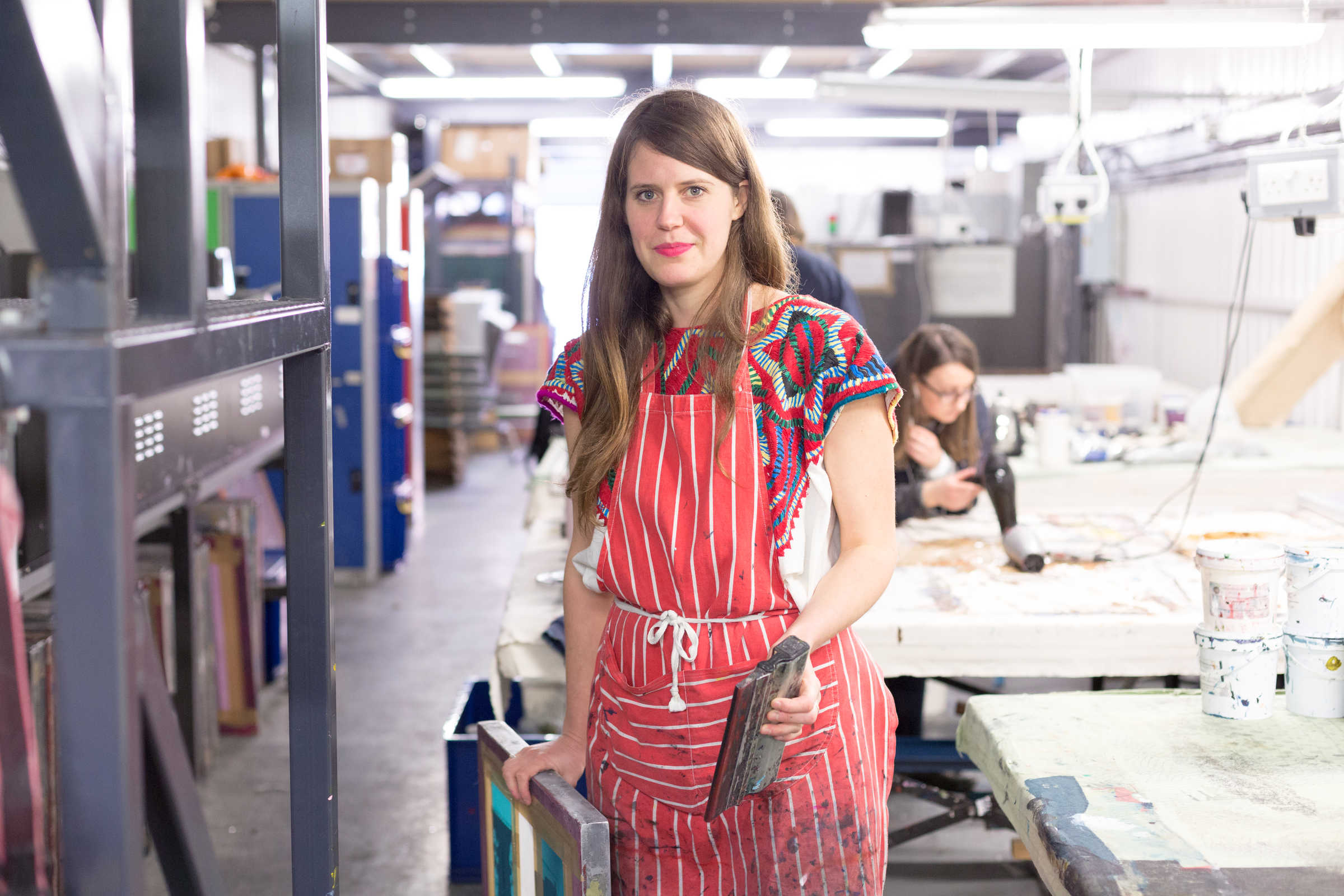
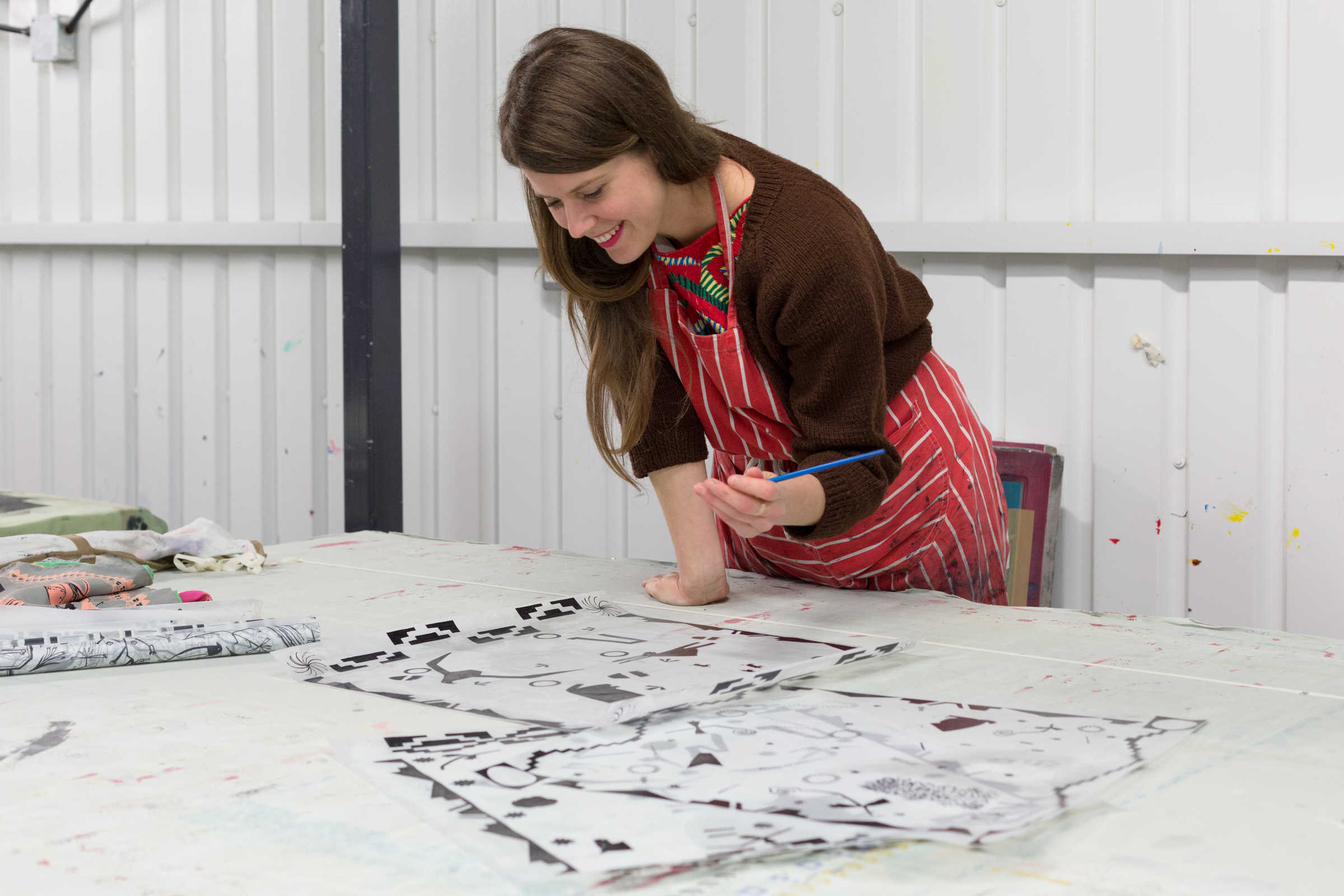
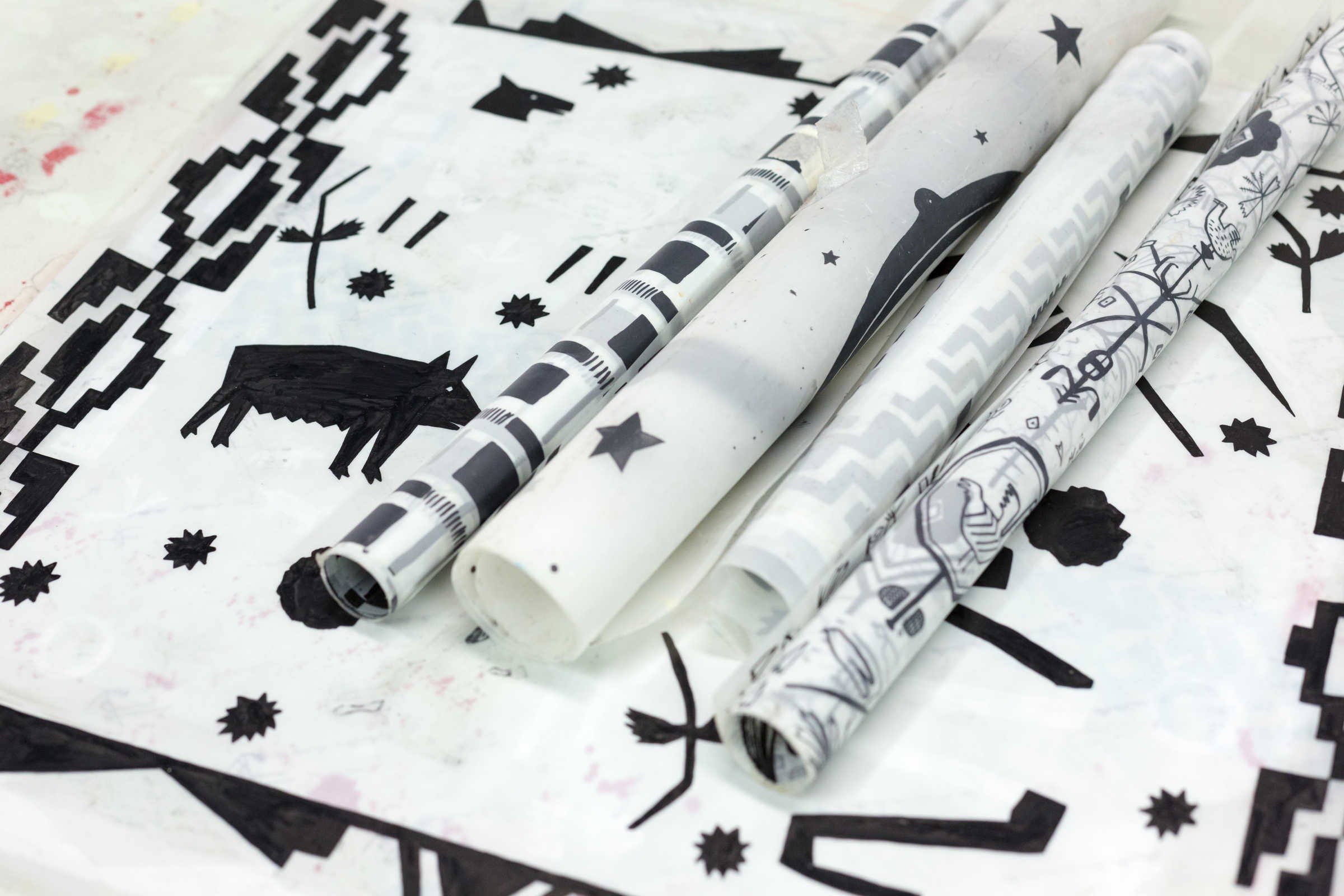
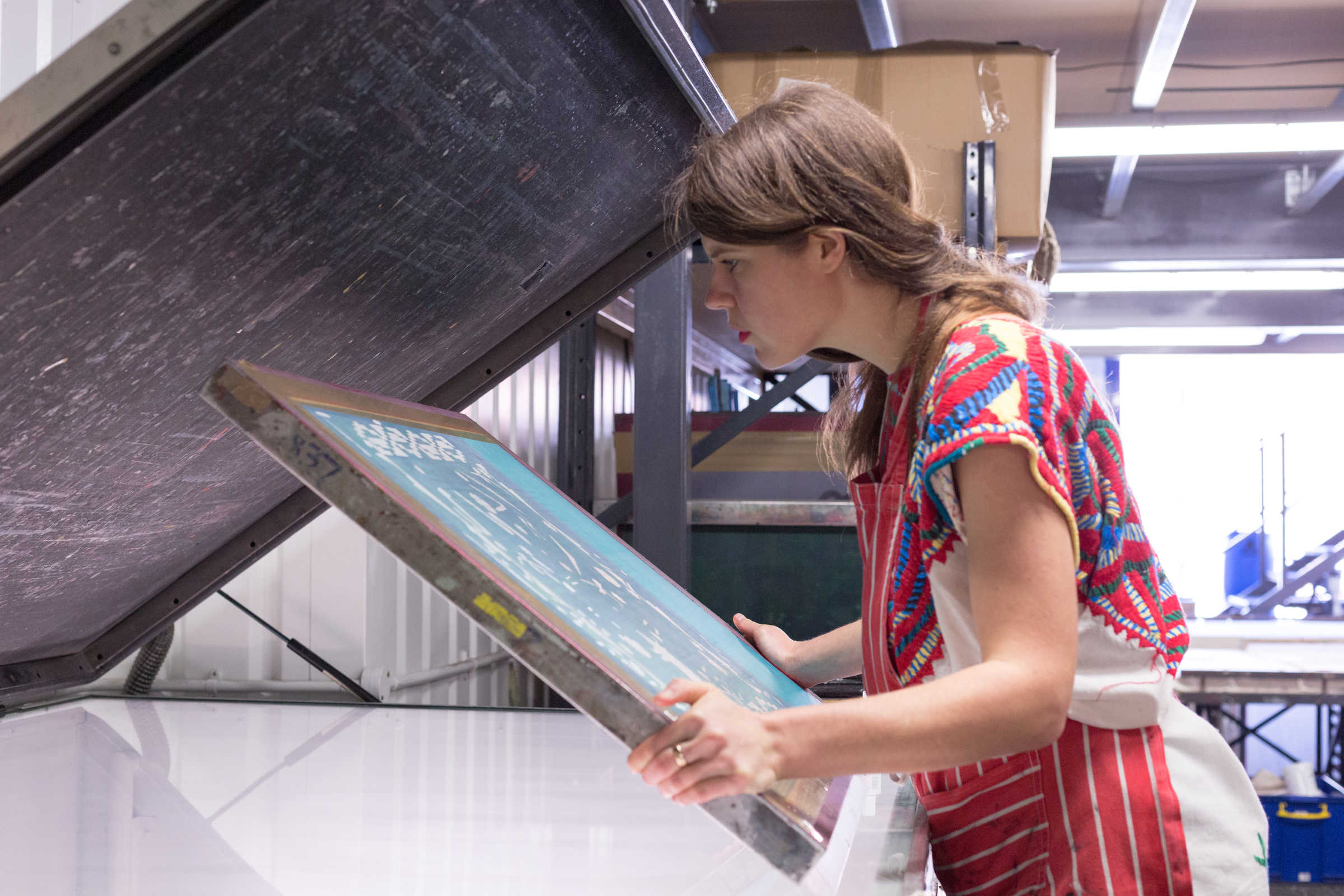
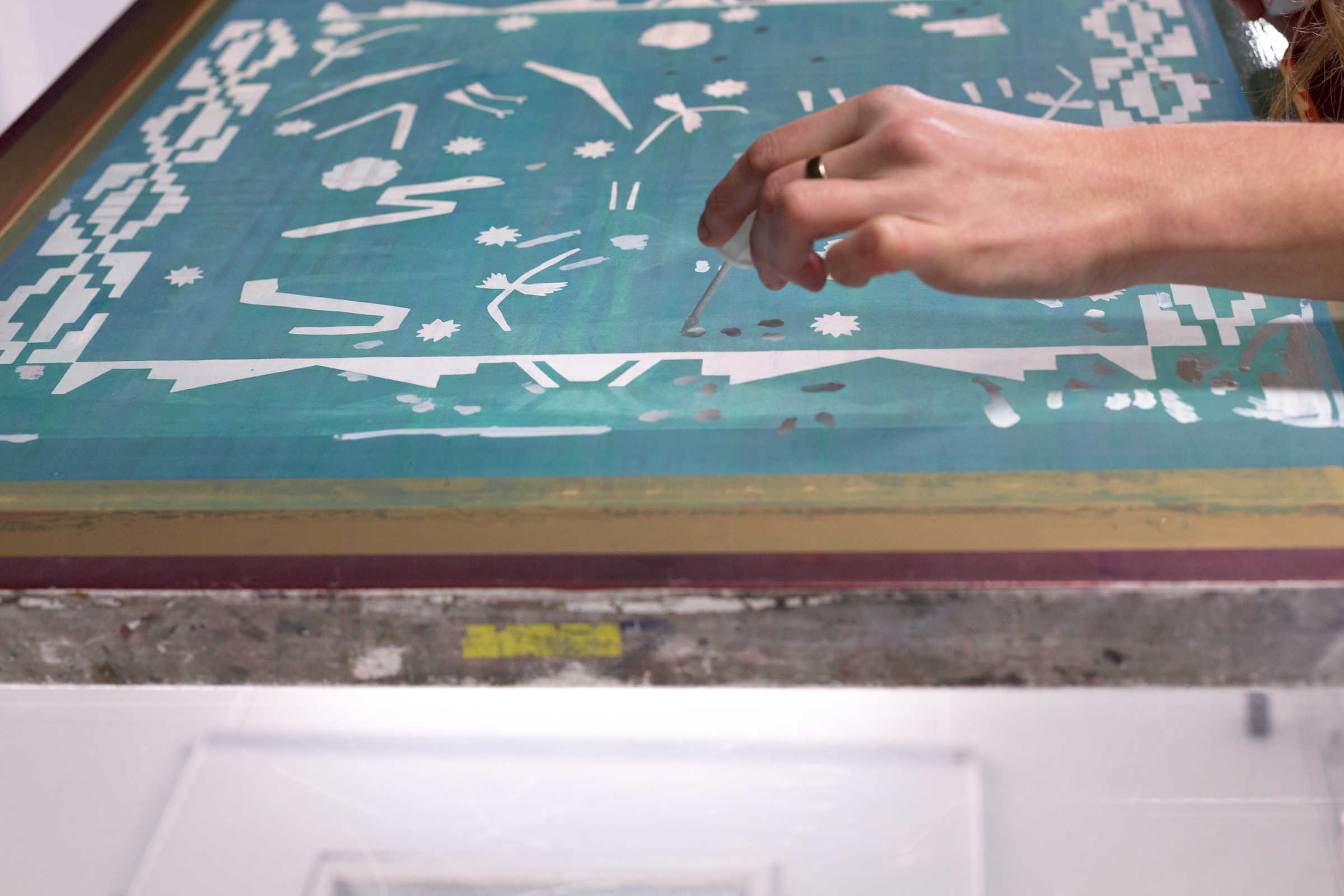
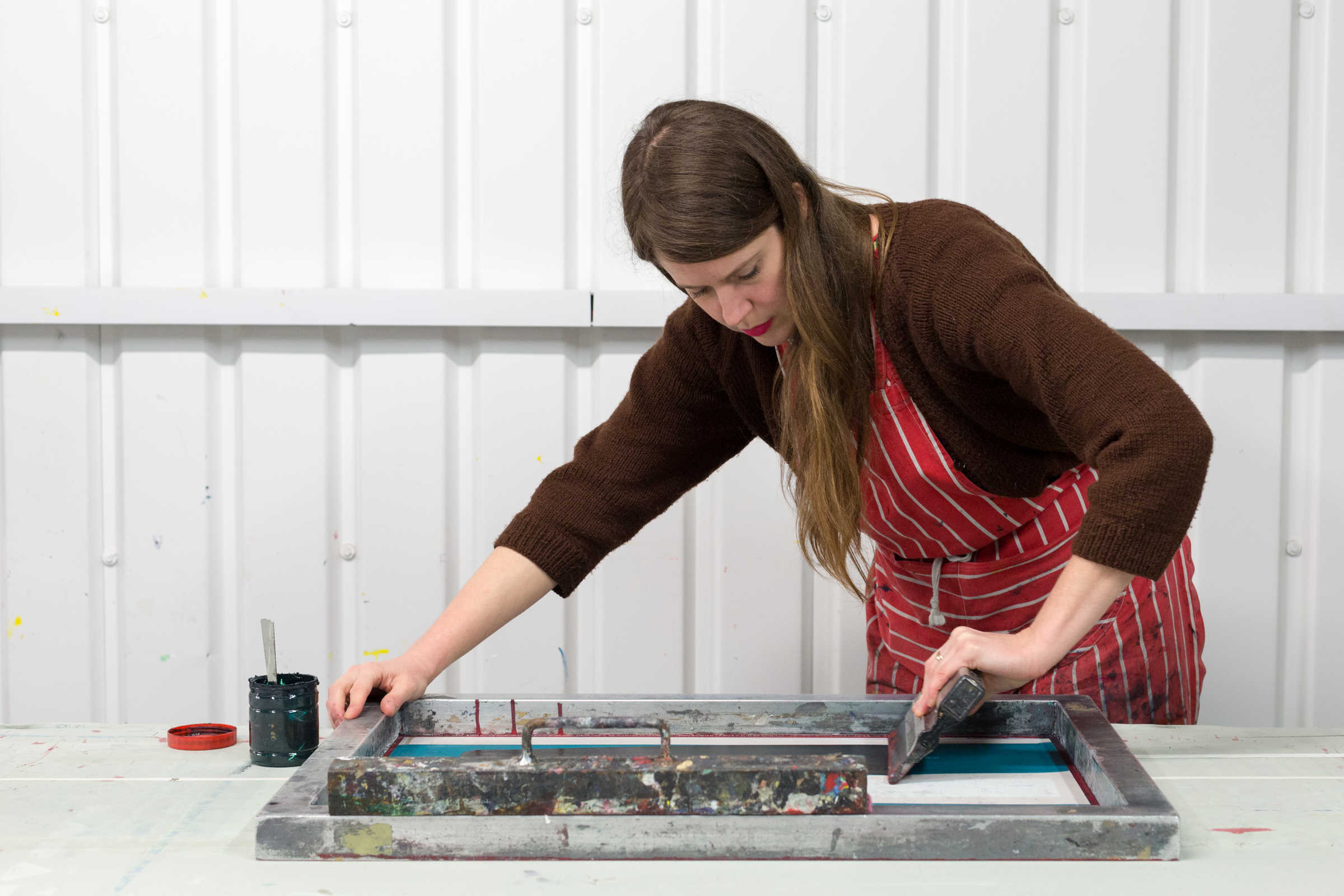
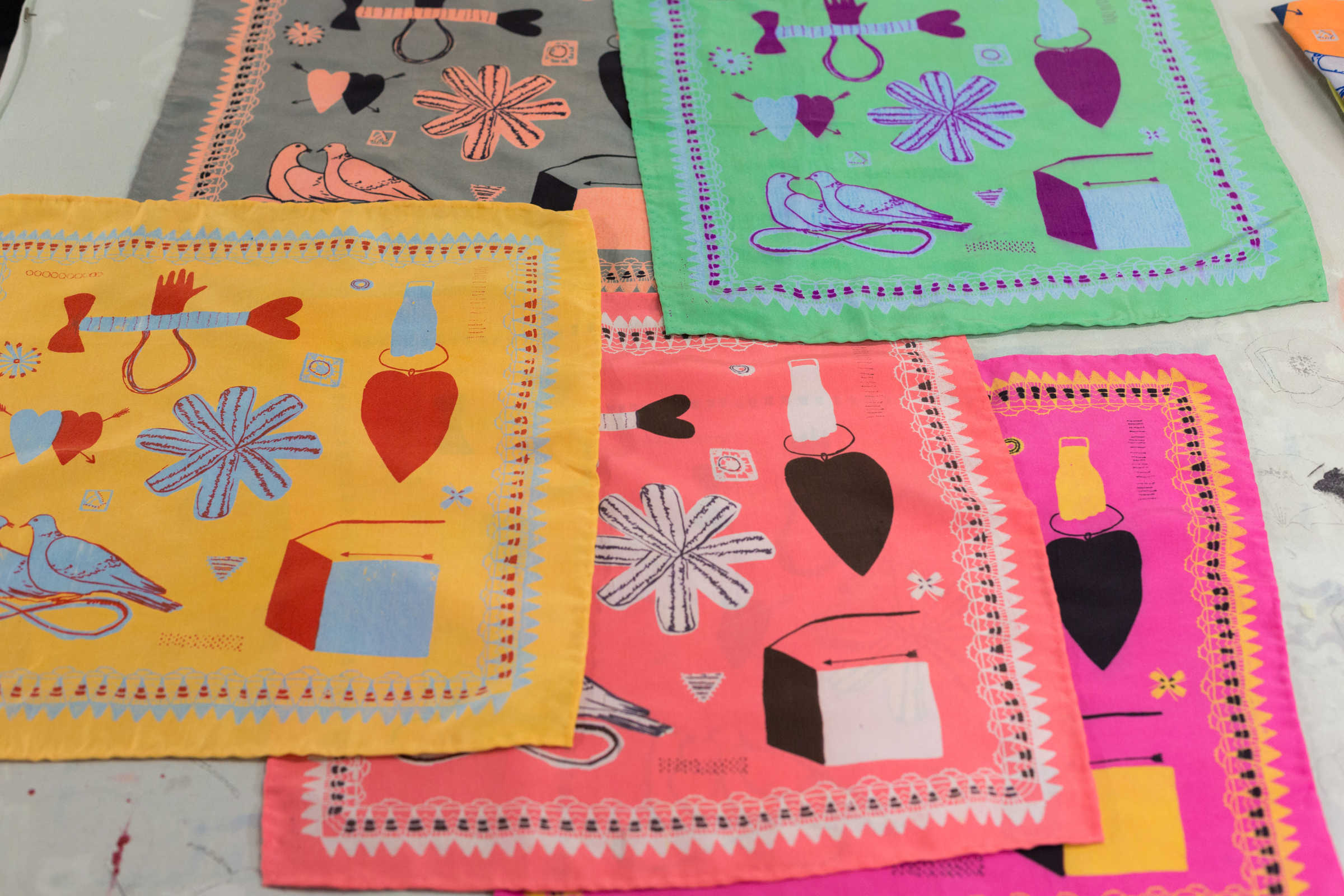
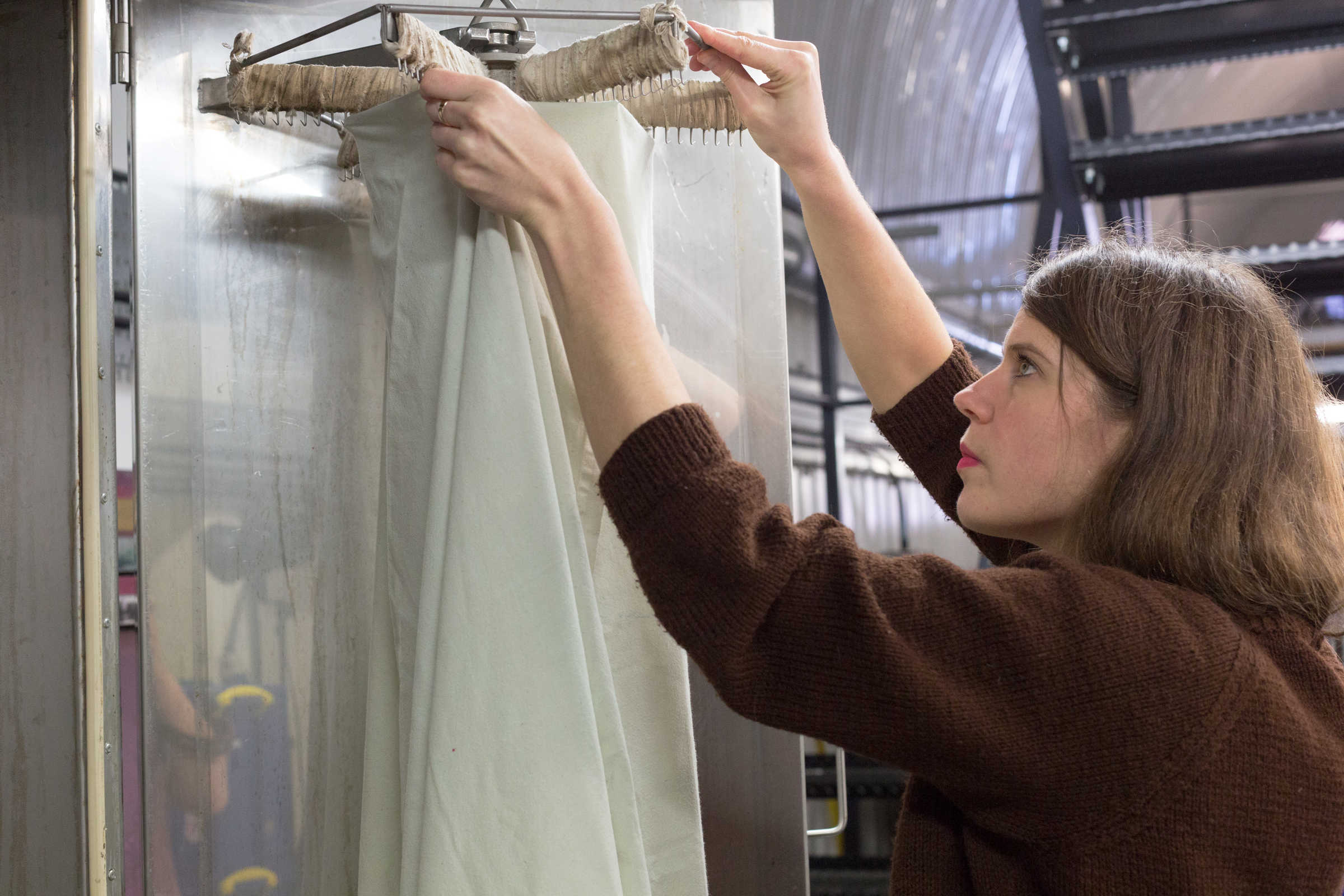
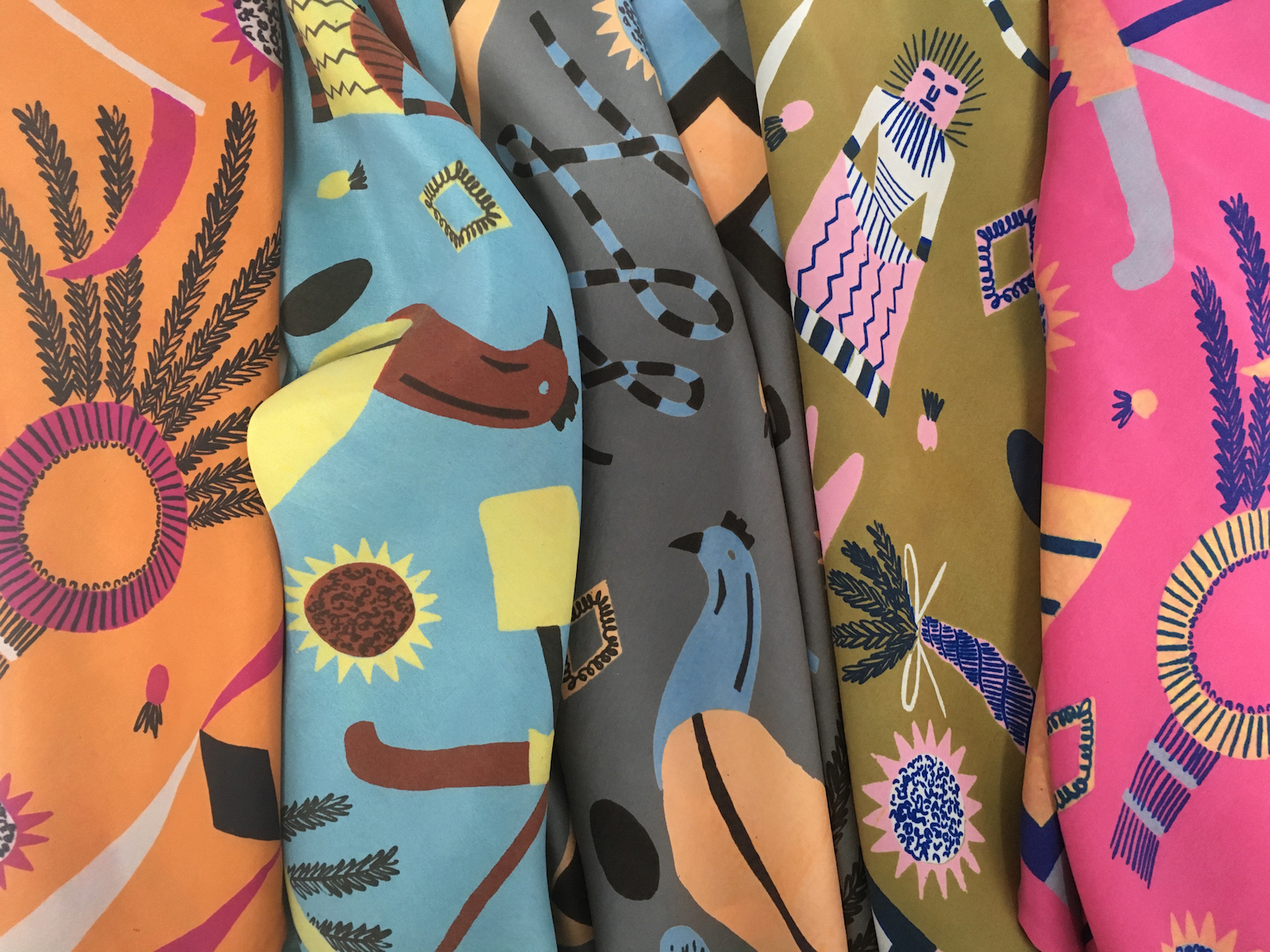
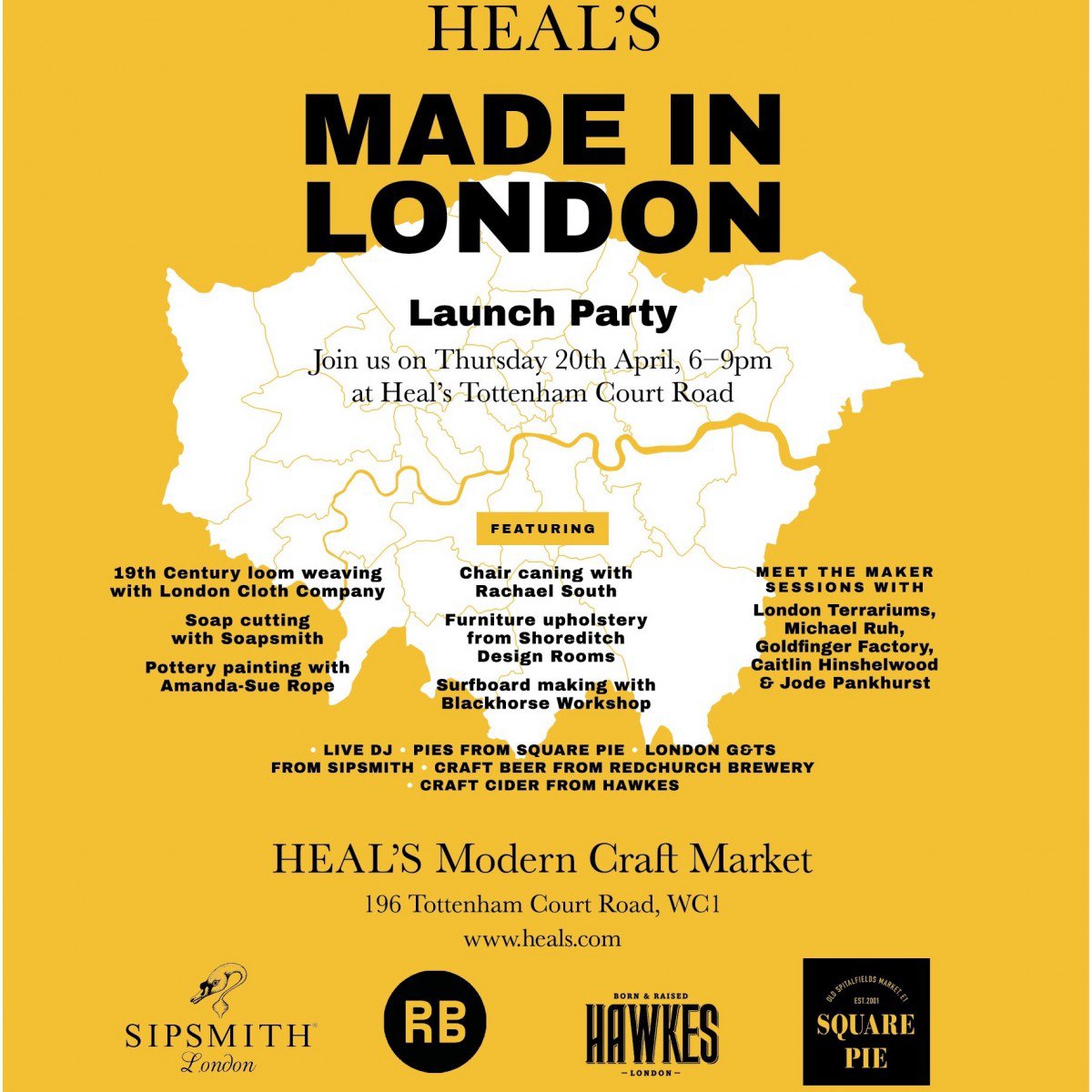
One thought on “Made in London: Caitlin Hinshelwood”
Comments are closed.